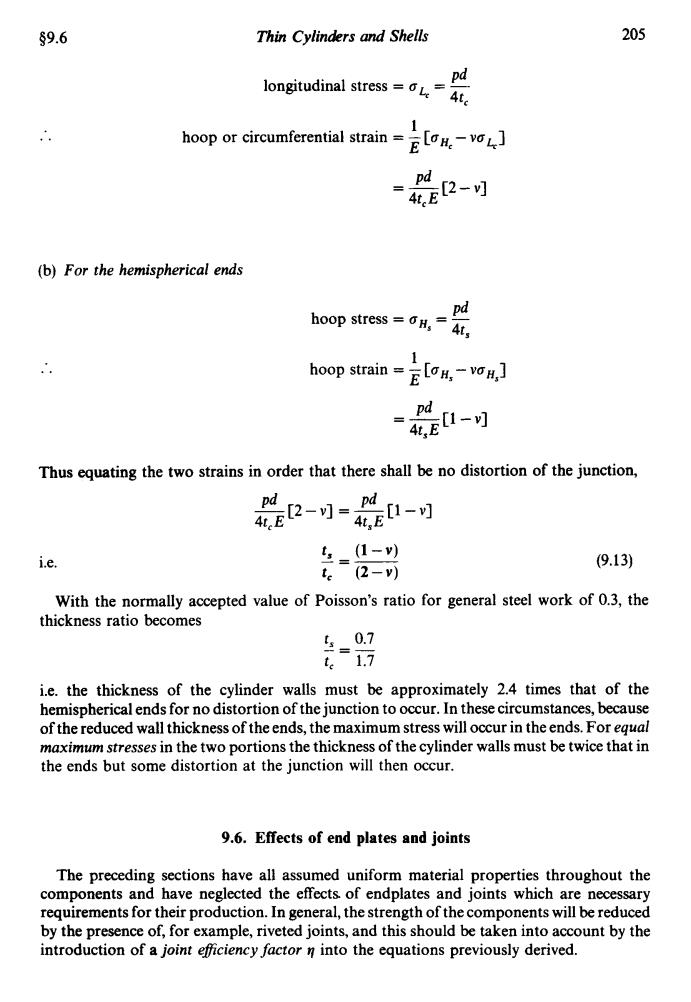正在加载图片...

$9.6 Thin Cylinders and Shells 205 longitudinal stress=L= pd Ate 1 hoop or circumferential strain 2- pd = (b)For the hemispherical ends pd hoop stress=6H,=4在, 1 hoop strain=v 、pd [1- 4t E Thus equating the two strains in order that there shall be no distortion of the junction, 卫--是-可 pd i.e. 5=1-) (9.13) t.(2-v) With the normally accepted value of Poisson's ratio for general steel work of 0.3,the thickness ratio becomes t1.7 i.e.the thickness of the cylinder walls must be approximately 2.4 times that of the hemispherical ends for no distortion of the junction to occur.In these circumstances,because of the reduced wall thickness of the ends,the maximum stress will occur in the ends.For equal maximum stresses in the two portions the thickness of the cylinder walls must be twice that in the ends but some distortion at the junction will then occur. 9.6.Effects of end plates and joints The preceding sections have all assumed uniform material properties throughout the components and have neglected the effects.of endplates and joints which are necessary requirements for their production.In general,the strength of the components will be reduced by the presence of,for example,riveted joints,and this should be taken into account by the introduction of a joint efficiency factor n into the equations previously derived.$9.6 Thin Cylinders and Shells 205 .. Pd longitudinal stress = aLc = - 44 1 E hoop or circumferential strain = - [gHc - vak] Pd = -[2-v] 44 E (b) For the hemispherical ends Pd 4ts hoop stress = oHs = - 1 E hoop strain = - [aHs - voHs] Pd = -[1 -v] 4t,E Thus equating the two strains in order that there shall be no distortion of the junction, -[2-v] Pd = -[1 Pd -v] 4t, E 4t,E i.e. (9.13) With the normally accepted value of Poisson’s ratio for general steel work of 0.3, the t, 0.7 t, 1.7 thickness ratio becomes - =- i.e. the thickness of the cylinder walls must be approximately 2.4 times that of the hemispherical ends for no distortion of the junction to occur. In these circumstances, because of the reduced wall thickness of the ends, the maximum stress will occur in the ends. For equal maximum stresses in the two portions the thickness of the cylinder walls must be twice that in the ends but some distortion at the junction will then occur. 9.6. Effects of end plates and joints The preceding sections have all assumed uniform material properties throughout the components and have neglected the effects of endplates and joints which are necessary requirements for their production. In general, the strength of the components will be reduced by the presence of, for example, riveted joints, and this should be taken into account by the introduction of a joint eficiency factor tf into the equations previously derived